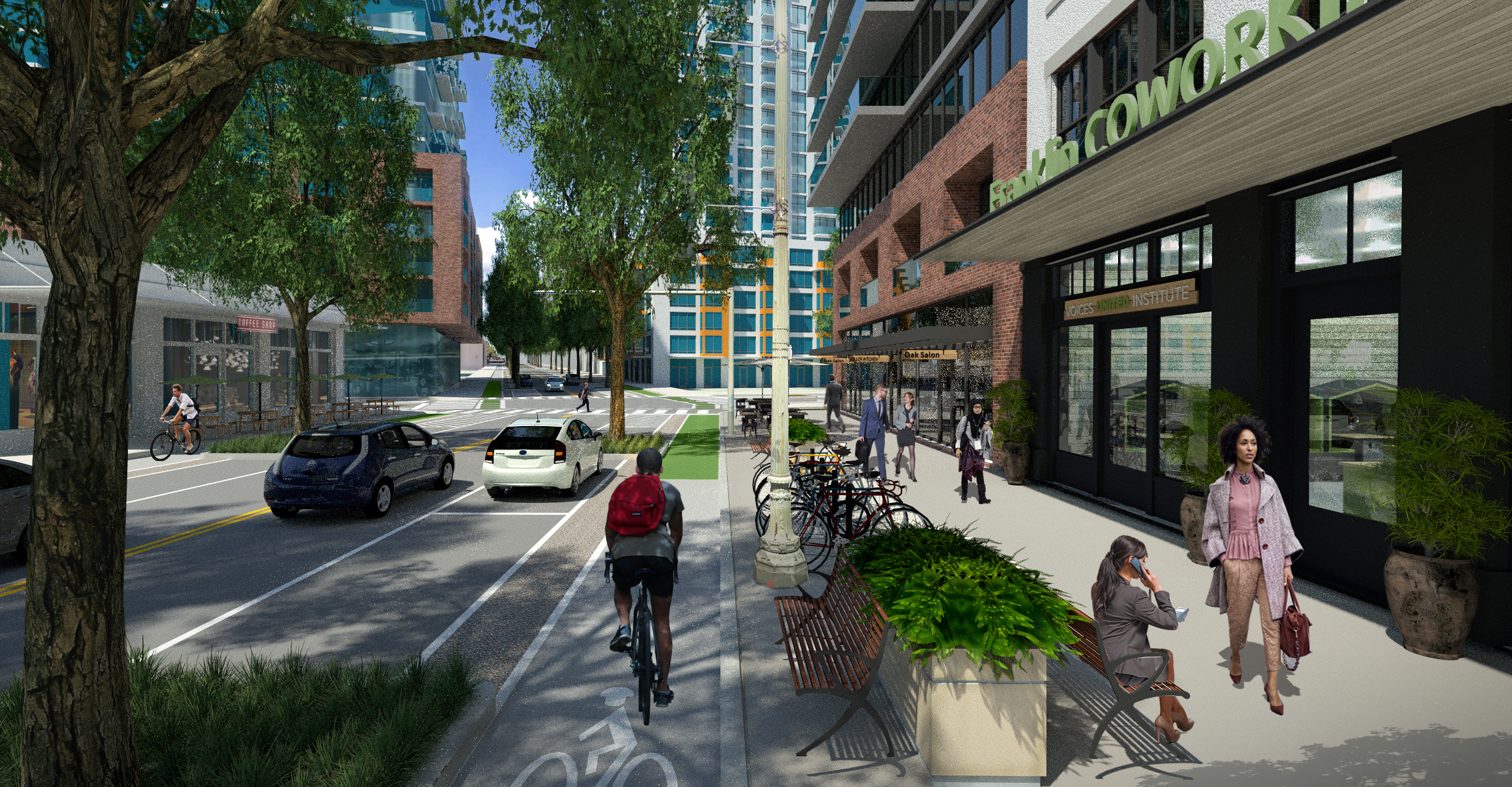The City of Oakland is preparing to release the draft zoning amendments for the Downtown Oakland Specific Plan (DOSP) for public review. The DOSP provides policy guidance on development, linking land use, transportation, economic development, housing, public spaces, cultural arts, and social equity.
After several years of
iterations, informed by public working sessions, focus groups, community
member interviews, equity working group meetings, community
capacity-building workshops, creative solutions labs, public hearings,
youth engagement activities, and Community Advisory Group meetings, the
public reviewed the Draft Downtown Oakland Specific Plan at the end of 2019.
Since
the 2019 review, the City has revised the DOSP for final adoption and
developed zoning amendments to the downtown sections of Oakland’s
existing Planning Code that will help implement the Plan’s goals using
land use regulations. City staff will present these zoning code
amendments for community feedback, then revise them to be considered by
the Planning Commission’s Zoning Update Committee (ZUC). Both the zoning
amendments and the Final Review Draft DOSP will then be taken together
to City Council later this year for adoption hearings.

What is Zoning?
Zoning is a code of regulations and accompanying maps that directly influence the location, size and form of buildings, and how buildings relate to each other and the surrounding environment. These zoning amendments are the Planning Bureau’s method of using land use regulations to implement the DOSP’s goals of reducing racial inequities, encouraging affordable housing and addressing homelessness, protecting Oakland’s existing residents and unique cultures, advancing economic opportunity, building a more environmentally sustainable and active downtown for healthier residents, and making the downtown safer and more accessible for Oaklanders and visitors with improvements to transit, streets and sidewalks.
DOSP Zoning Changes
Key elements of the DOSP’s zoning amendments will include:
- A zoning incentive program (ZIP), a voluntary program whereby
developers can build more intensity in exchange for community benefits
including:
- Subsidized affordable housing units
- Neighborhood streetscape and open space improvements
- Below market-rate space for cultural businesses and institutions, with special attention to businesses and community-based organizations in the Black Arts Movement and Business District
- Public restrooms, and
- Construction hiring from community apprenticeship programs.
- New zoning overlays to address sea level rise; create safer and more active areas under freeway overpasses; encourage ample and affordable arts and cultural spaces; and create a walkable, bikeable and landscaped Green Loop and West Oakland Walk to connect downtown’s waterfronts.
- Minimum heights and an office priority regulation to protect downtown’s most transit-oriented remaining development sites for construction of tall and dense high-rise office and residential towers.
- New mixed-use, dense housing development in the currently industrial Victory Court area on the east side of Jack London Square in walking distance to the waterfront and the Lake Merritt BART station.
- An expanded transfer of development rights (TDR) program to protect historic areas by allowing property owners to sell their right to develop them to developers in other parts of town where more intense development is appropriate, and
- Design standards to ensure new development fits well into historic neighborhoods.
Stay Involved
Please sign up at the project website (bit.ly/OakDOSP) to receive updates when the zoning amendments are released. The updates will let you know how to review, comment and participate in community discussions about the amendments.
In the meantime, you can review existing Plan publications, including the Public Review Draft Plan and Public Review Environmental Impact Report (EIR) on the project website.
Thank you for your continued commitment to the future of downtown Oakland.
